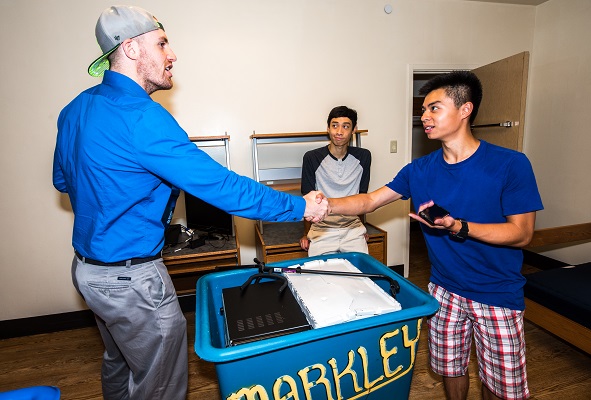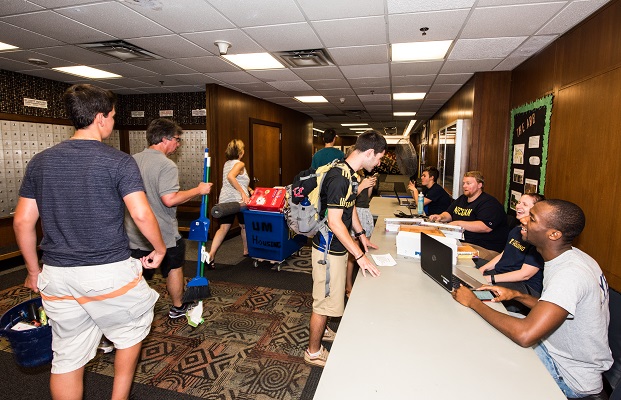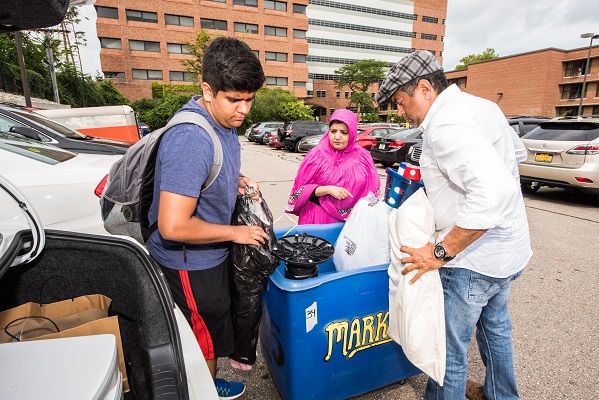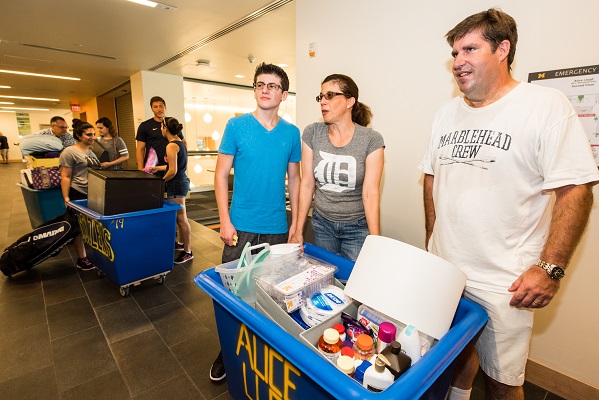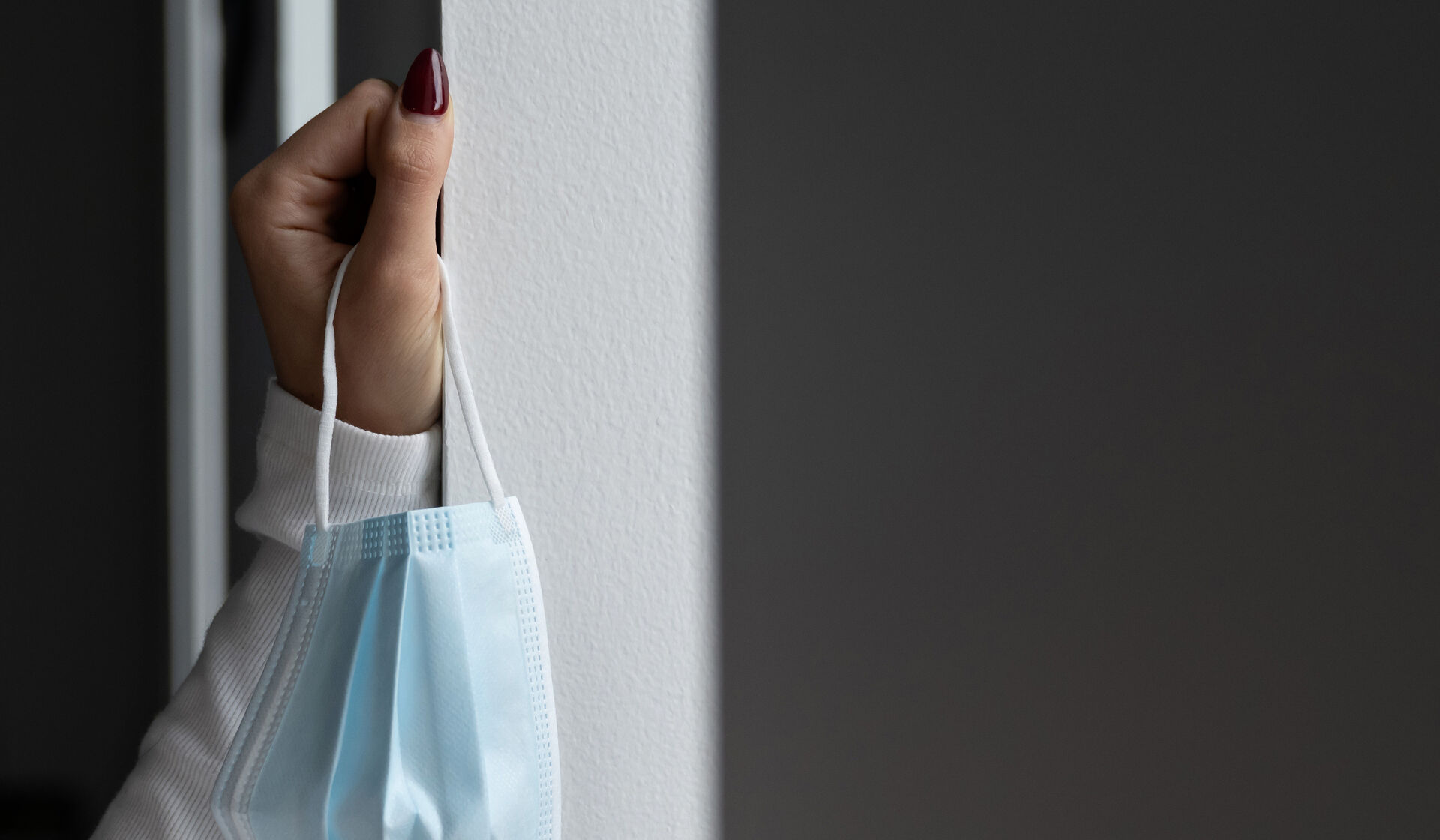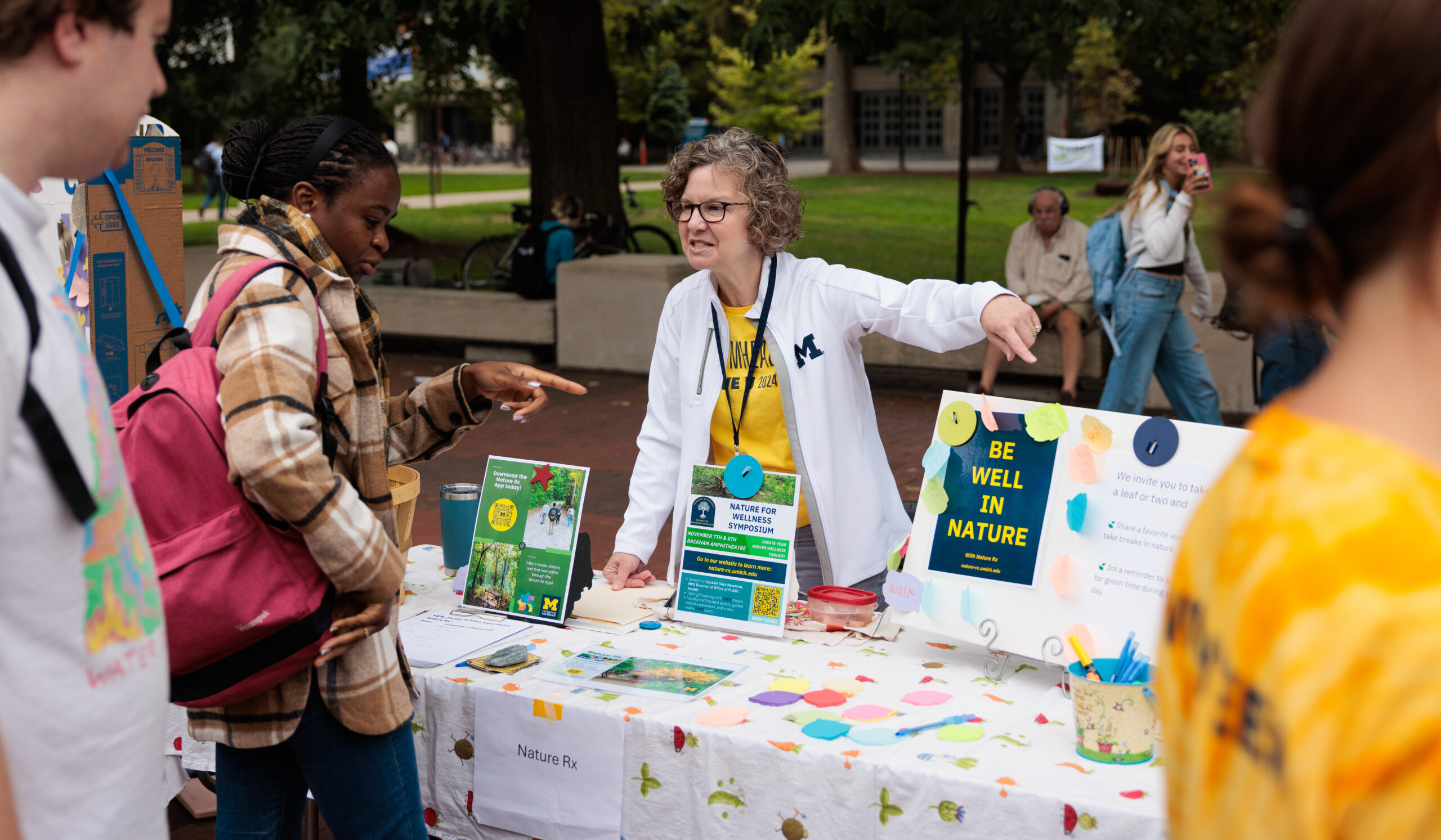The familiar blue carts—stuffed with everything from teddy bears to microwaves—were a familiar sight around campus Aug. 31-Sept. 2 as 9,500 undergraduate students, 6,500 of them freshmen, moved into 16 residence halls. We spoke with Amir Baghdadchi, director of communications in U-M’s housing office, about the mania that ensues during this annual ritual.
How many freshmen move into the residence halls?
Ninety-eight percent of the freshman class chooses to live on campus. That’s actually quite extraordinary; you don’t have to live on campus at Michigan. If you look across the University and across the U-M experience, there is almost nothing else that is shared like that.
How do you control for so many people moving in during such a short period of time?
Everyone wants to arrive at the same time or bright and early, and we realize it’s never going to work that way. So we took a tape measure and measured every single parking space in front of every single building and mathematically modeled it to every single traffic pattern during the day so that we know for every hour of the day, for every building, how many spots are available. And we offer time slots based on that number.
It sounds like move-in is quite a logistical challenge.
The only thing, I think, that’s even equivalent to that maybe is a wedding, with the combination of logistics and memories. And we’re essentially staging about 6,500 weddings on a very small basis every fall, with considerably less cake.
So you consider move-in a memorable event.
For many people, move-in is not just changing your address. It’s something you’re going to remember for the rest of your life.
What are the vital components of move-in day?
The MVP of move-in is the big blue bin on wheels.
Do you ever see anything odd in the (approximately 200) blue bins?
We have a long list of prohibited items—it’s amazingly specific. My favorite is the phrase “Flesh-eating species (e.g., piranha) are not permitted.” One can only assume every item was put on the list because of an incident that we had.
And I’m amazed at how many people think they are going to use a microwave. They bring it, and then I’ve seen students actually eat ramen dry because they couldn’t be bothered to take the time to microwave it. And I ask them, “Do you like it?” And they’re like, “Not really, but it saves time.”
Some students arrive with something like a melon baller that their parents have packed them. And you wonder what picture that parent has of college life where a student says, “You guys go on ahead. I’ve got a really ripe cantaloupe I need to work on right now.”
What is the day like for parents?
For thousands of parents, this is basically the only time they’re going to walk into Michigan and we have an opportunity to show them just what we could do, to reassure them that this place is just as amazing as they hoped it would be for their students.
You mentioned that parents often help their students put together the modular furniture in their rooms. Positive or negative experience?
Many students and parents are surprised that they are going to bond over a small furniture assembly project together on move-in day. They all come together in a wonderful moment of furniture arranging.
Are parents more happy or more sad to be dropping off their students?
They absorb the excitement of their student. You can’t help, as a parent, not to be thrilled when you see your student really excited about college. So it’s all infectious.
If you think about it, the student is the one who’s nervous because they’re about to start something brand new in their lives. The parents are having a blast—all the fun of college with none of the classes. The best conversations are often when parents start telling you stories about their college education. And usually the stories are a little on the colorful side, but they can’t help themselves.


